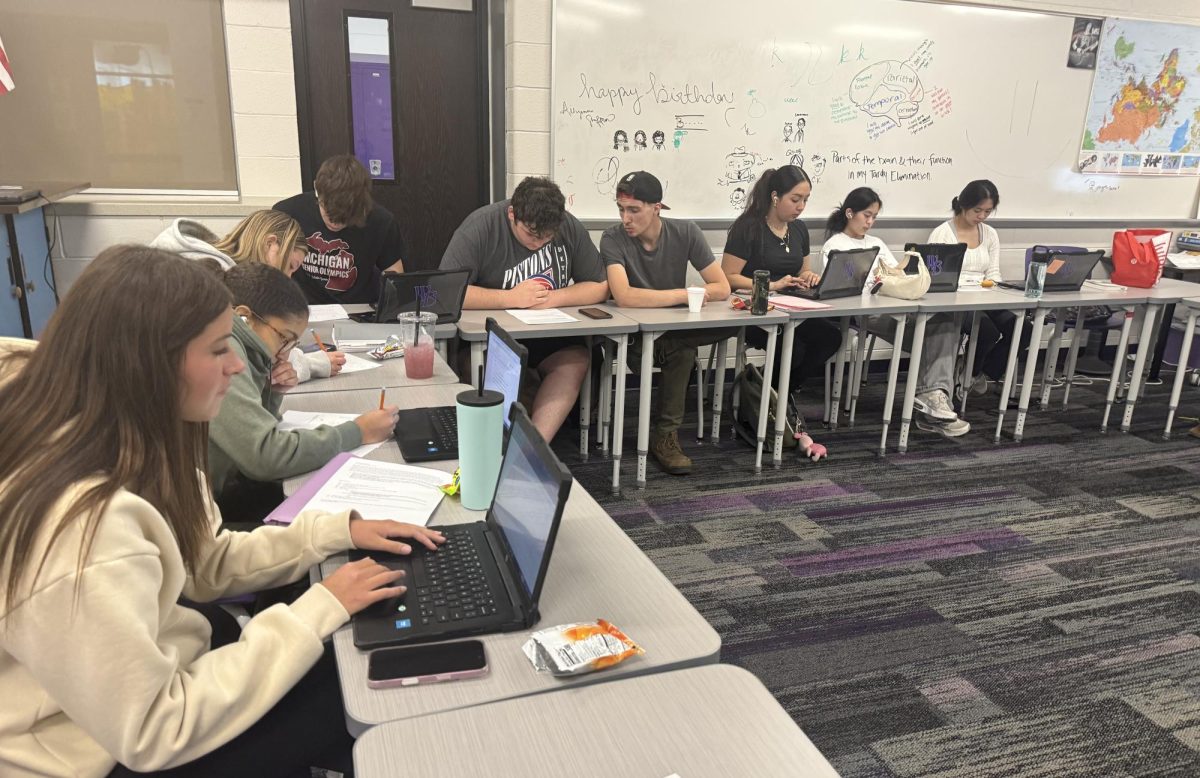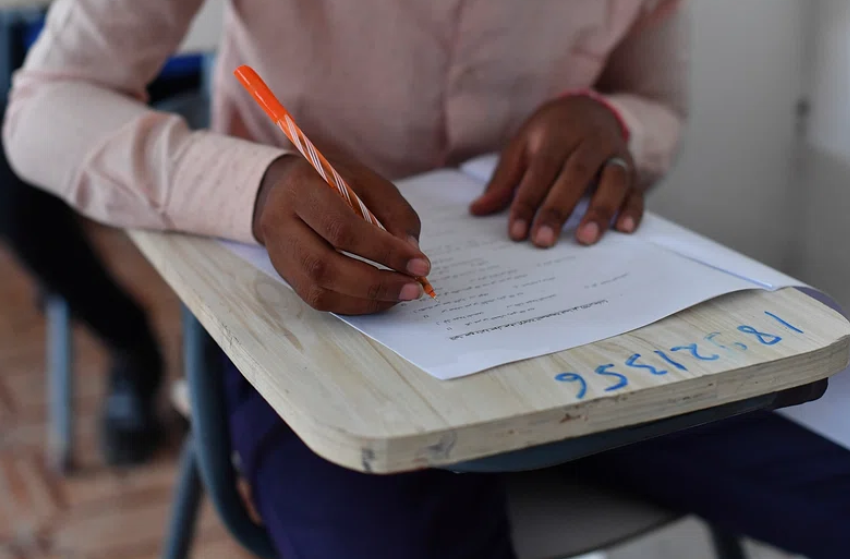The emotional effects that students feel from long school days could potentially be solved by an impactful communication form between students and teachers.
WHY USE STUDENT EVALUATIONS?
On a daily basis, students are graded on their academic achievements within the classroom. They receive a letter grade in the grade book based on certain criteria including their performance during tests, quizzes, homework assignments, and class projects. While some students excel at the academic aspect of education, others excel at the social participation of classes and the argument that this is an equal way to grade students has been present for some time.
Students are often graded into categories that might not be exactly what fits their needs when learning. But, fortunately, there are a lot of understanding teachers out there that can accept this difference in learning and adjust their classroom to fit that.
But what happens when students don’t feel like they are being given the tools to succeed equally in the classroom? Does that fall back on the quality of the teacher or the student’s lack of motivation in the class?
Students at WHS have varying opinions about this topic. Many students find that when in school they are stressed to levels they sometimes cannot manage and even go back to saying it is the way their teachers are expecting so much from them in such little time.
This unsettling and high expecting environment that is set up for students from day one, is extremely overwhelming for many students. WHS students state that the lack of approachability and connectedness for a teacher-student relationship makes the school feel like such an ensnaring place. With students nowadays spending more time trapped in their electronic devices, that lack of in-person relationships is what makes the school feel like such a taunting place for some. The societal norm of engaging with people all day through social media outside of school is brought into the high school setting and reflects the students’ interactions with teachers and even classmates. The National Library of Medicine states, “Reliance on smartphones has been linked to a form of psychological dependency, and this reliance has detrimental effect on our affective ‘mood’ states.”
To offer a feasible solution for all of this, students should be able to provide their feedback to teachers in a constructive manner that will bring about positive change. Just like teachers give students feedback on assignments and virtually through grades, students should be able to reciprocate information to their teachers in an open and fair means of communication. Being able to do so would allow students to feel a level of control over what they are taking part in every day and bring some joy into the classroom.
Take Into Account
When asked, senior and top 10 in her class, Jennifer Henegar states, “I think it’s unfair for teachers to expect students to get all their homework done on time in the time that the teachers allow for them to get it done without understanding their time management outside of school including extracurricular activities. But the teachers get as much time as they want to grade papers and they claim that they have lives outside of school, so we have to be patient with them but they’re often not patient with us as students.”
Many teachers are given the workload of well over 150 hundred students in one given day and are told they have to accomplish this in a reasonable amount of time to please everyone. However, students are also often faced with this workload and have to accomplish the work of multiple teachers promptly which is acceptable for all parties. The length of homework is the most challenging part for students because they are spending hours working on work instead of being able to do what they enjoy.
If there was a fair way for students to communicate post-school overlaps with their teachers, then they would be able to understand the workload of students outside of school and the teachers would be able to work something out that is reasonable for everyone. Teachers would also be able to communicate their after-school commitments which explains to the students a reasonable time to get grading done. But without feedback from the students and no aspect to grade the teacher fairly, this idea is not able to be understood by both ends of the problem. On top of the grading that teachers have to do, they also have to maintain a relationship with their students as well as continue to work on planning for the rest of the weeks.
Teachers often find that their work-to-home life is not something that should be interchanged together and they will not take anything home for the sake of keeping those aspects of their lives separate. But students are not able to choose if they want to do homework or not, or if they should skip their homework and spend time with their family instead. This constant pressure on students is not fairly represented by the teachers’ lives outside of school and students should be able to communicate their concerns to their teachers.
Often too, the amount of attention that students receive during class is reflected in the grades that they are receiving. Teachers who spend time in front of the board teaching the lesson and providing assignments to strengthen their understanding are the teachers whose students are excited to come to class and learn more. Presenting a welcoming environment for students is something that teachers have been able to work on throughout the years through their feedback from students verbally. If students were able to leave a category on the teachers’ yearly assessments from the administration, this could be heightened further and create an even better environment.
Cornell University’s Center for Teaching Innovation states, “Creating the opportunity for significant teacher/student interactions and conferences that allow instructors to connect with students.” This connection with students can go far beyond the surface in ways teachers cannot imagine. It can boost someone’s mood, give them something to look forward to, and support them with an adult that they can confide in every day.
Communicating Feelings
The issue of teachers using electronic ways of teaching, unrealistic homework time, and an overwhelming expectation for students to take on an over-abundant workload, have caused students to feel they are being given an unfair learning experience. While some teachers rely on YouTube, Quizlet, and other teacher websites to educate their students about the material that the government requires, there should be more teachers out there who understand students and are willing to work with them equally. On occasion, there is no passion behind someone teaching, no desire to understand students, and no desire to do more beyond their hours at school and students should be able to communicate this frustration with teachers in a fairly represented manner.
When students have that lack of desire and no drive for a deeper understanding in school, their grades are often reflected by what their teachers are receiving from them. If a teacher reaches out to a struggling student and does not feel they can connect with them, this issue is unsolvable and the loop continues. By opening up a door for the student to communicate their feelings about the class, the student would be more open to a new way of learning and their grade would no longer reflect the lack of motivation from the class. VCU Center on Transition Innovations states, “Research indicates that students who believe they have a voice in school are seven times more likely to be academically motivated than students who do not believe they have a voice.”
According to an informal survey of WHS students, if they were to be given the option, 96.2% of respondants said that they would take the opportunity to grade their teachers compared to 3.8% responding saying they would not be interested in it.
WHS students were most in agreement that when teachers are graded, they should be graded on their approachability, engagement during class time, understanding that life happens, and accommodating students who are in need. All of these criteria would lead teachers to receive open and honest feedback from their students about what they are doing well and what they could work to improve upon.
Flaws(Improvements?) and revisions
However, putting the power of grading teachers in the hands of high school students can also be detrimental. High school students are often working through personal struggles in their daily lives and often bring it to school. These struggles can put students in bad moods and even cause them to take out their emotions on their teachers. Having emotional and hormonal students give feedback to their teachers could be a way for some students to take out their feelings on a teacher they do not connect with as well.
This could cause teachers to read an opinion about their teaching that is solely based on someone having a bad day or a student experiencing something difficult outside of school. But when students are allowed to communicate a dislike about a teacher’s classroom, that teacher can reach out about the misconnection and work something out that is better for everyone.
WHS student Elizabeth Henegar states, “I think high schoolers are immature and they would not be fair in grading their teachers. I think a lot of kids don’t want to be at school in the first place and would take that frustration out on the teachers so their problems would be reflected on the teachers’ grades.” This is a real problem that would be created if students were given full freedom to grade their teachers with no criteria. If specific criteria were addressed and students were able to understand the importance of the information they were giving, the situation would be enlightening rather than hurtful. A 2020 article at Inside Higher Ed reports that, “Unless the correlation between student ratings and teaching quality is “far, far stronger than even the most optimistic empirical research can support,” then common administrative uses of SETs “very frequently lead to incorrect decisions.”
Providing Solutions
While in school, If teachers gave students deadlines that remained within school hours, this would encourage students to work within the class period, and alleviate additional stress outside of school. Kaydence Gooch states, “Many teachers at WHS consider after-school responsibilities when assigning work. A prime example of this would be a teacher that only assigns in-class assignments with the expectation that it is completed by the due date.” This way of learning seems to work well with both parties. Students can learn within school hours like they are expected but are also able to enjoy their after-school activities without feeling overwhelmed. To reach this point though, students need to be able to communicate with their teachers if this method works for them or if they find it does not work.
By allowing students to provide feedback to their teachers, there would be an open understanding between the teachers and the students about the methods of teaching and the level of understanding. Most teachers would recognize that if students are not liking their style of teaching they will change it up and try another method to help their students excel. This would open the door to a better way of learning, keep teachers motivated and follow a schedule, as well as keep students engaged and more willing to learn new information.






